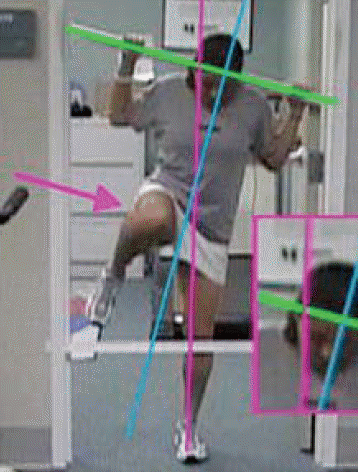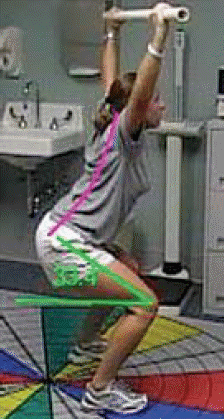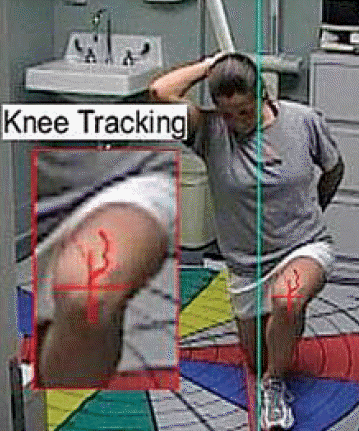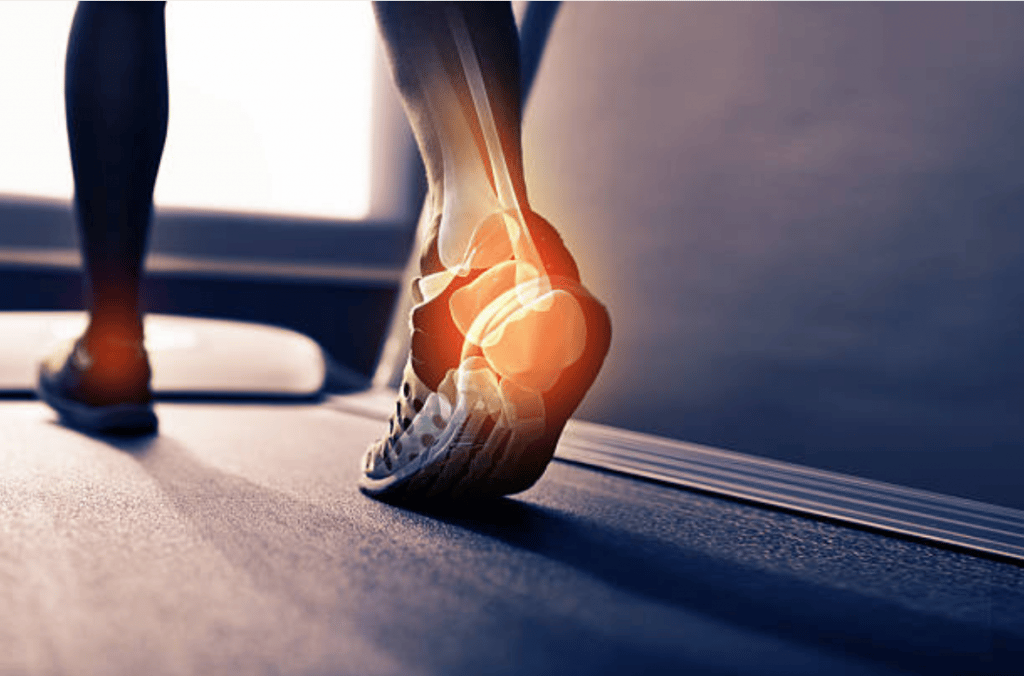This article by Larry Jaffe & Gray Cook originally appeared in Training & Conditioning Magazine in 2006. While the Dartfish toolset has since become more sophisticated, the principles and benefits are as relevant now as then. Larry Jaffe, PT, MS, SCS, ATC, a video analysis expert, practices at Memorial Hospital West in Pembroke Pines, Florida, where he is developing a Pediatric and Adolescent Sports Medicine Program. Gray Cook, MSPT, OCS, CSCS, creator of the Functional Movement Screen, practices at Orthopedic and Sports Physical Therapy in Danville, Virginia. Find out more about his work at www.functionalmovement.com. You can also download a PDF of the original article.
Successful rehabilitation today is based on outcomes. How quickly do you get your athletes back on the field? How effectively can you react to the individual subtleties of each athlete? How well can you assess and treat the entire athlete, and not just the injury? It’s no longer good enough simply to know anatomy and traditional treatment protocols. We need to understand how to analyze and adapt our approach based on each athlete and each rehab workout they do. We need to know how to navigate the exercise choices that produce the greatest benefits and get injured athletes back to play as efficiently and effectively as possible. One major key to accomplishing this is to maintain the highest level of objectivity during assessment and corrective exercises.
In order to assess whether an athlete is completing exercises in a functional manner, we have to see the nuances of their movements. We also have to ensure the movements are consistently correct and fundamentally sound. Another key is communicating with athletes. They need to know immediately when their movements are off, so that incorrect movement patterns don’t become habitual. They also have to be quickly convinced of the need to alter what they are doing wrong. This makes rehab a more dynamic process, but also a more difficult one. How can you continually assess and analyze? And how can you provide feedback to the athlete that is meaningful and consistent?
We have found that using digital video and computer software during the rehab process is part of the answer to both these questions.
Assessment & Treatment
In our practices, rehabilitating an athlete always starts with a full-body functional assessment in conjunction with an orthopedic assessment of the injury. We don’t just want to treat the injured anatomy, we want to understand all the limitations the athlete is experiencing. We also want to understand any compensation the athlete has acquired while living and moving around an injured segment. The compensation can often be a potentially greater problem than the original injury, if not managed effectively.
We use the Functional Movement Screen (FMS) to assist us in our assessment, which helps reveal where any underlying problems lie by applying the standardized movement format. More recently, we have used digital video cameras and software to take the FMS to a higher level of objectivity. By filming our athletes and using Dartfish software, which can analyze and break down athletic movement, as well as measure angles and view the interaction of body segments. This allows for a more specific and objective evaluation.
Using video also allows us to document the athlete’s starting point and their progress. As we re-assess throughout the rehab process, we can scientifically compare their movements from week one to week two, week four, and week eight. We can see the effectiveness of therapeutic choices. We can decide if and when we need to alter our approach.
For example, as an athlete performs a straight leg raise, we can compare the degree of an extension lag or the control of the hip raising and lowering the leg as they progress through rehab. Another benefit of training with video is the ability to observe movement in areas that are hard to see in a mirror. For example, after an athlete has any type of shoulder surgery, they tend to have difficulty controlling their scapula. By setting up a camera behind the athlete, they are able to see what their scapula is doing during an activity such as shoulder abduction. During the latter stages of rehab, the video helps us determine when an athlete’s more complicated and functional movement patterns have returned to pre-injury levels. For instance, if we have a baseball pitcher making a comeback from elbow surgery, we want to see his elbow rising higher than his shoulder during the pitching motion. Often, it is hard to pinpoint the exact location of the elbow because the action happens so fast. With digital video, we can slow things down and see precisely where the elbow is relative to the shoulder. This way, we can be assured of a functional outcome to the rehab, and the athlete can be more confident as they return to play.
Video also gives us the ability to review a performance many times. During live observation, we cannot possibly see everything that goes on as the body progresses through the rapid and complex movements produced during exercise. But by viewing a workout multiple times, slowing it down, or freezing one frame, we can zero in on particular areas. Let’s say a volleyball player is having back pain. We may look at her spiking motion during practice and not see anything wrong. But with video, we can watch specific areas of her body, frame by frame, to find the cause of the pain. Maybe limited hip motion is the culprit. Maybe there is a problem with how her knees absorb her landing. Maybe her shoulder is rotating in a deficient way. The video lets us look at each area in isolation.
Video assessment can also reveal how movement is changed by the addition of tape, braces, or splints. It is sometimes difficult to convince athletes to wear a brace or tape during practice and competition. By filming them with and without the brace, you can show them how it is effective. Conversely, the video can help us wean an athlete off a brace. We compare movement patterns with and without the brace, and when there is no significant difference between the two, the athlete can see that they no longer require the additional support.
Communication
None of this analysis will do any good, however, if the athlete is not convinced his or her movement has problems or inefficiencies that need to be addressed. This is the second area where the video and software play a critical role. Video-assisted visual feedback can help athletes see what is wrong with their movement, or help show them how to take things they’re doing right to the next level. Video feedback allows athletes to analyze, interpret, and evaluate their own performance. Most athletes understand what they are asked to do during a training session, but many have difficulty feeling what they should be doing. When athletes can see their performance as an observer, not a participant, they can understand in a more meaningful way what they are doing well and what they need to correct. Typically after reviewing their performance on the video, I ask them what they think, instead of telling them what I think. I ask, What did you see? What was good? What do you need to correct? This gives them more ownership and buy-in, which leads to better outcomes in the long run and gives them greater motivation to improve. We’ve also found that when an athlete trains with multiple cameras around them and a monitor directly in front of them, they concentrate more on utilizing proper form. For example, during the inline lunge, did their knee track medially during the concentric phase of the lunge? If an athlete can answer that question on their own, they’re more likely to correct the movement. After a couple sessions in front of the cameras, athletes learn what proper movement feels like, and their sound technique carries over to sport-specific drills.
Ultimately, athletes become better at correcting themselves through this process. They are more excited about refining the quality of each movement they produce. They can’t wait to get the feedback from the video!
How to Use It
A video feedback system can be as simple as one camera placed in one spot in the room. Or it can be as sophisticated as several cameras at different angles with large computer monitors and software to analyze everything. If you can only afford one camera, set it up where it can capture the athlete at the most critical angle. Also make sure it is far enough away so that it can film the complete activity. After the athlete has finished the prescribed exercises, review the video with him or her. Together, you can discuss what went well and what needs improvement.
With a computer monitor and software, you can do much more. Once the video is loaded onto the computer, the Dartfish software allows the instructor to view clips at several speeds, draw lines on or highlight certain parts of clips, and even share the analyzed clips via the Internet. Dartfish also gives the instructor the ability to compare multiple clips, either from the same athlete or from different people (for instance, a rehabbing athlete and a healthy athlete).
In our clinic, we typically use two cameras, placed at the front and side of the athlete. We try not to change the location of the cameras, so we can easily compare the athlete’s video with other recordings. The Dartfish software allows us to zoom in and manipulate the position of the athlete. Sometimes we even place a camera directly overhead, for a view that we’d never see otherwise.
Case Study
Here’s a closer look at how we use digital video in a rehab situation: The athlete is a 20-year-old female NCAA Division I soccer player who has been cleared to play, but has a history of injuries that continue to bother her. That history includes repeated right ankle sprains, a severe left hamstring strain, and occasional lower-back pain. We start by asking her to complete the FMS. Test results are as follows:
- Overhead deep squat: score of 2 (best is 3), which indicates the movement is performed with a compensation. There is demonstrated decreased mobility in the right hip and ankle.
- Hurdle step: score of 2 for the right, 1 for the left (a 1 indicates the athlete is unable to perform the movement). When raising her right leg, she displayed an inability to balance and a laterally flexed spine to the left. When raising her left leg, she made contact with the hurdle and lost her balance.
- Inline lunge: score 2 for both right and left legs. She displayed a mobility deficiency in the right lower leg and a stability issue during the left leg stance.
- Straight leg raise: score 2 for both the right and left legs. She demonstrated adequate hamstring flexibility, but had poor hip mobility (tight hip flexors on the contralateral side) and weak lower abdominal stability.
When reviewing the FMS, the athlete was surprised that she scored so low since she was able to participate in preseason workouts and scrimmages. She actually felt she had completed the test better than other players on her team who scored higher than her. It was not until we reviewed the video and allowed her to help rescore her own test that she was able to recognize and acknowledge her poor technique.
We explained that we were not simply testing her athleticism with the FMS (she proved her athleticism on the field)—we were demonstrating that by moving poorly with basic functional movements, many underlying compensations were present, which were robbing her of movement efficiency. With the help of the Dartfish video analysis software, we could slow down each test and look at her technique throughout the entire movement.
As seen in the image below, during the hurdle step the athlete was unable to raise her right leg straight over the barrier without losing some balance. Dartfish provided tracking of the movement: The green line is the PVC pipe (dowel) the patient is to hold parallel to the ground. The purple line is perpendicular to the floor, and the blue line is the athlete’s midline.

In the next image, the athlete is performing a deep squat. The purple line tracks her spine, and the green angle shows her loss of motion compared to if her body was parallel to the floor.

The final example shows an inline lunge. The blue line is perpendicular to the floor. The orange cross is tracking the patella during the lunge. And the zoomed-in image reveals the movement of the athlete’s patella during the lunge.

Once the athlete was aware of the compensation, we used a two-camera setup to show her a frontal and lateral view of herself completing the test movements, using the “In The Action” module of Dartfish software to provide instant replay at different speeds. This revealed to her how her body compensates while she performs the exercises. Once she saw where her movement was deviating from the norm, she better understood where and how she needed to improve. She went through a regimen of corrective exercises, and once she had developed greater mobility in her hip, she trained in front of the cameras to ensure that she was maintaining proper form.
For this athlete, we used the video to help assess deficiencies, develop a training protocol, and teach her to self-correct her motions. It made the process more efficient and effective—and will help her avoid future injury.
Questions and answers
Video with software analysis can be an effective tool for the evaluation and rehabilitation of the injured athlete. Since this tool can enhance the quality and quantity of information, it can, however, provide as many questions as answers. The purpose is not to randomly record all movement looking for problems. The key is to choose movements and movement patterns that are most representative of the basic problem at each stage of rehabilitation. The clinician can use this movement as a baseline and then begin treatment and prescribe exercises to improve the chosen movement or movement pattern. This process can be repeated throughout rehabilitation until restoration of functional movement is demonstrated and the athlete is returned to their chosen sport.

Comments are closed.